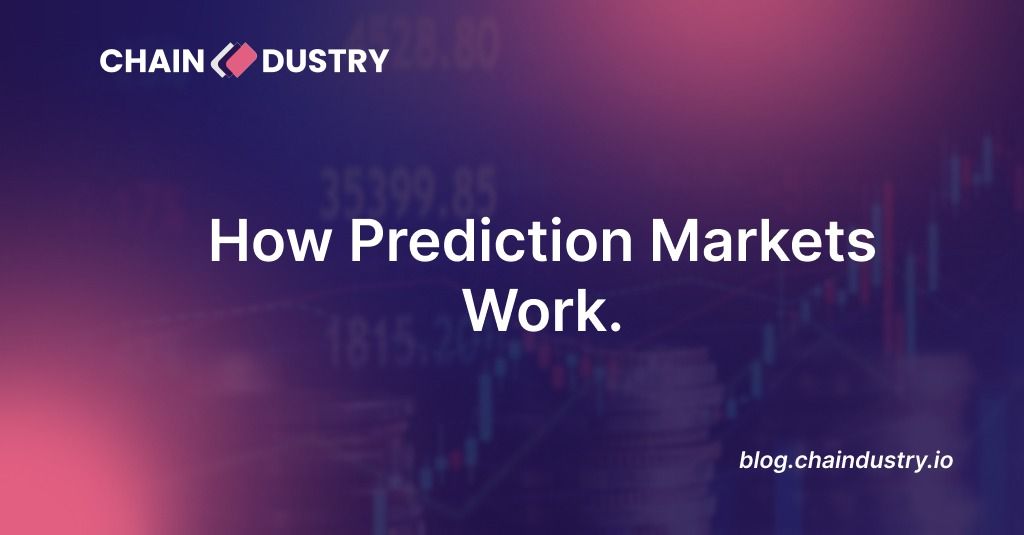Introduction
In 2025, prediction markets have improved from experimental blockchain projects into legitimate financial platforms that let users profit from being right about real-world events. From election outcomes and sports results to crypto prices and global policies, these markets allow participants to trade on the probability of future events and earn if their forecasts are correct. Unlike traditional betting, prediction markets are built on transparency and decentralized trust. They rely on blockchain technology and smart contracts, eliminating middlemen, ensuring automatic payouts, and protecting user funds.
The Concept Behind Prediction Markets
Prediction markets operate much like stock exchanges, but instead of trading company shares, users trade “outcome shares.” Each market poses a simple question — for example: “Will Bitcoin exceed $100,000 before December 31, 2025?” If you believe “Yes,” you can buy “Yes” shares, which might initially cost around $0.40. If the event happens, those shares pay out $1.00 meaning a 150% gain. Prices of “Yes” and “No” shares move up or down as traders buy or sell, reflecting the collective confidence of participants in each possible outcome. This dynamic makes prediction markets powerful tools for crowdsourced forecasting. The aggregated opinions (and money) of thousands of traders often predict outcomes more accurately than polls, analysts, or expert forecasts.

How Prediction Markets Work
At the heart of every blockchain-based prediction market are smart contracts and decentralized oracles. Smart contracts manage the creation, trading, and automatic settlement of outcome shares. Once an event’s result is confirmed, the contract distributes winnings instantly to holders of the correct outcome.
Oracles, such as Chainlink or proprietary market feeds, provide verified data about real-world results — ensuring that the final decision is transparent and tamper-proof. Most modern prediction markets, like Polymarket and Kalshi, also use liquidity pools. These pools ensure there’s always enough activity for buyers and sellers to trade efficiently without major price fluctuations. Prediction markets serve two main purposes: 1. Speculation — traders bet on likely outcomes for profit. 2. Hedging — individuals or companies use markets to offset risk. For instance, a business affected by inflation could hedge using a market that predicts interest rate changes.
Why Prediction Markets Matter in 2025
The power of prediction markets lies in their collective intelligence. When diverse people put real money behind their opinions, markets tend to reflect a more accurate estimate of the future than traditional polls or expert guesses. Governments, researchers, and investors now monitor these markets to gauge public sentiment, election probabilities, and even economic forecasts. For traders, this means access to real-time insight and a chance to profit from knowledge, analysis, and intuition. Regulation is slowly catching up too. While the U.S. treats prediction markets cautiously, other regions like Europe and parts of Asia are integrating them into financial systems as innovative data-driven tools rather than gambling platforms.
Conclusion
Prediction markets offer a unique opportunity to turn insight into income. By merging finance, data science, and human psychology, they represent the next frontier of decentralized forecasting. Still, participants should approach them strategically understanding both the potential gains and risks involved. With sound judgment, disciplined forecasting, and a bit of intuition, prediction markets can transform knowledge into measurable profit in 2025 and beyond.
